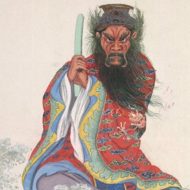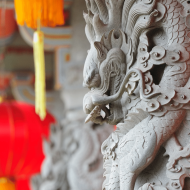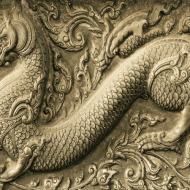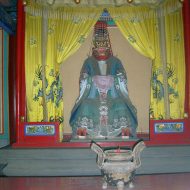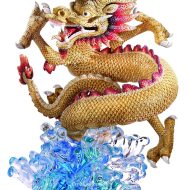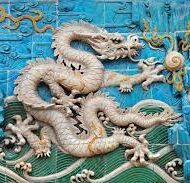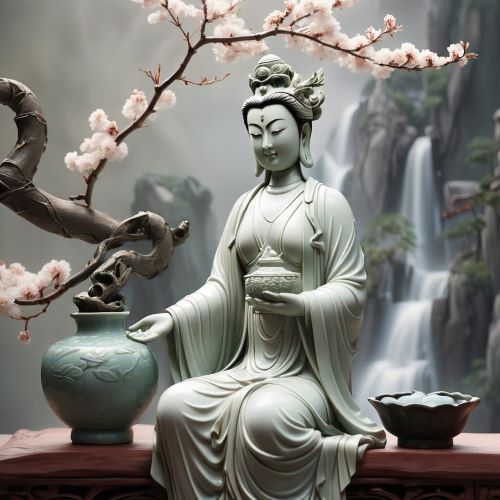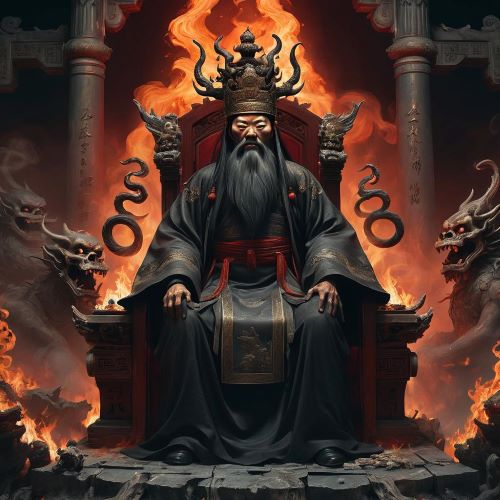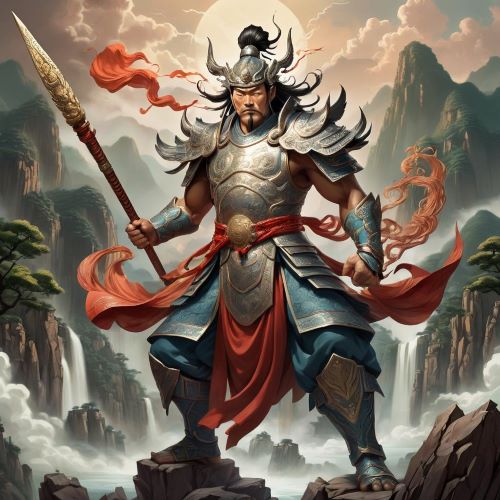Longwang : The Dragon King
At a glance
| Description | |
|---|---|
| Origin | Chinese Mythology |
| Classification | Gods |
| Family Members | Ao Guang, Ao Shun, Ao Qin, Ao Run (Brothers) |
| Region | China, Japan |
| Associated With | Rivers, Water, Seas |
Longwang
Introduction
The Dragon King, a god of the seas and of dragons in Chinese mythology, receives direct commands from the Jade Emperor. As the source of rain, Long Wang is also revered as a weather and water deity. A number of Chinese coastal cities and bodies of water have the Dragon King as their protector.
Both human and dragon forms are available to the Dragon King. The Wushen, also known as the Five Forms of the Highest Diety, are the entities that rule the water and underworld, and the Dragon King, also known as Sihai Longwang in his dragon form, together with his brother Huang Long, the Yellow Dragon, represent these entities. He is also known as the Dragon King of Wells and Springs.
Physical Traits
Typically, Long Wang is shown as a zoomorphic dragon and as a human figure. The dragon god takes on the form of a ferocious warrior wearing elaborate, flowing royal robes and a lengthy, dark beard. His eyes and skin are a deep red colour, signifying his ferocity. The Dragon King is frequently portrayed as a dragon in the Chinese dragon style, which features a long snake-like body with four legs, numerous horns, a beard, and pointed claws. The hue of his scales varies depending on the artist, but red is the hue that is most frequently used. Oldest Chinese texts describe the Dragon King as having a horse-like face with wings on either side.
Family
The Northern, Eastern, Southern, and Western seas are governed by Longwang’s four brothers. Ao Gung (Chinese: ) rules the Eastern Sea, Ao Qin (Chinese: ) rules the South Sea, Ao Rùn (Chinese: ) rules the West Sea, and Ao Shun (Chinese: ) rules the North Sea. Legend has it that Longwang has thousands of offspring, including the young girl named Sagara who becomes a Buddha in The Lotus Sutra. He is still regarded as the early Chinese emperors’ figurative father.
Other names
The words “dragon” and “king,” lóng and wáng, respectively, are combined to form the name Longwang. The “Dragon King of the Four Seas,” or simply “Lóngshén,” are two other names for him that are occasionally used. “.
Powers and Abilities
The Dragon King, also known as Long Wang or Longwang, is a powerful god in Chinese mythology who is the lord of the waters and god of dragons. He lives in a luxurious palace beneath the seas, where he consumes gems and commands an army of aquatic creatures. He can also transform between dragon and human form. Despite his intimidating and ferocious nature, Long Wang is seen as a benevolent deity who brings fortune and chi (qi) energy to those living near the sea. He is also believed to be responsible for rainfall and curing droughts in coastal communities. Worship of the Dragon King is common in Chinese and Japanese coastal areas, as his favor is important for those living near the sea.
Modern Day Influence
In Chinese coastal communities, Longwang continues to be well-liked, and people call on him when there is a drought. Along the streets that run along the beach, temples to him are frequently seen. On the thirteenth day of the sixth moon of the Lunar Year, Longwang is born, and the occasion is marked by sacrifices and parades. His likeness inspired the design of the well-known dragon boats, which are meant to reflect his fiery personality. The Fengshén Yanyi, also known as The Investiture of the Gods, The Lotus Sutra, and Journey to the West, are three works of ancient Chinese literature in which Longwang has a significant role.
Related Images
Frequently Asked Questions
What is lorem Ipsum?
I am text block. Click edit button to change this text. Lorem ipsum dolor sit amet, consectetur adipiscing elit. Ut elit tellus, luctus nec ullamcorper mattis, pulvinar dapibus leo.
What is lorem Ipsum?
I am text block. Click edit button to change this text. Lorem ipsum dolor sit amet, consectetur adipiscing elit. Ut elit tellus, luctus nec ullamcorper mattis, pulvinar dapibus leo.
What is lorem Ipsum?
I am text block. Click edit button to change this text. Lorem ipsum dolor sit amet, consectetur adipiscing elit. Ut elit tellus, luctus nec ullamcorper mattis, pulvinar dapibus leo.
What is lorem Ipsum?
I am text block. Click edit button to change this text. Lorem ipsum dolor sit amet, consectetur adipiscing elit. Ut elit tellus, luctus nec ullamcorper mattis, pulvinar dapibus leo.
What is lorem Ipsum?
I am text block. Click edit button to change this text. Lorem ipsum dolor sit amet, consectetur adipiscing elit. Ut elit tellus, luctus nec ullamcorper mattis, pulvinar dapibus leo.


